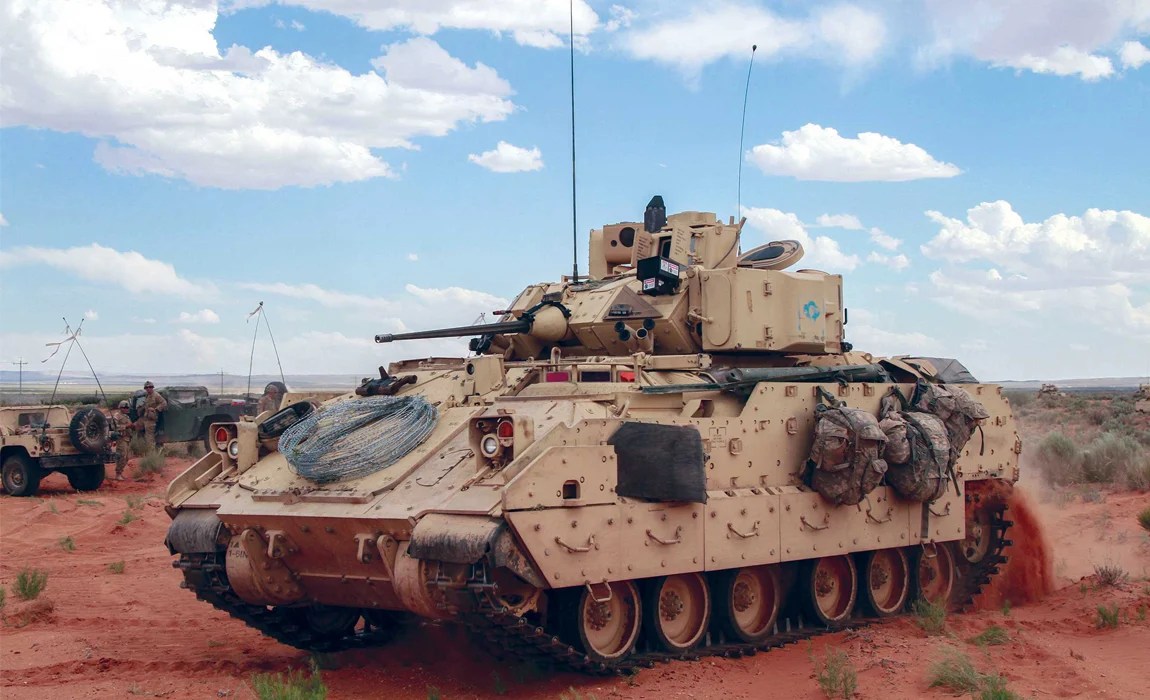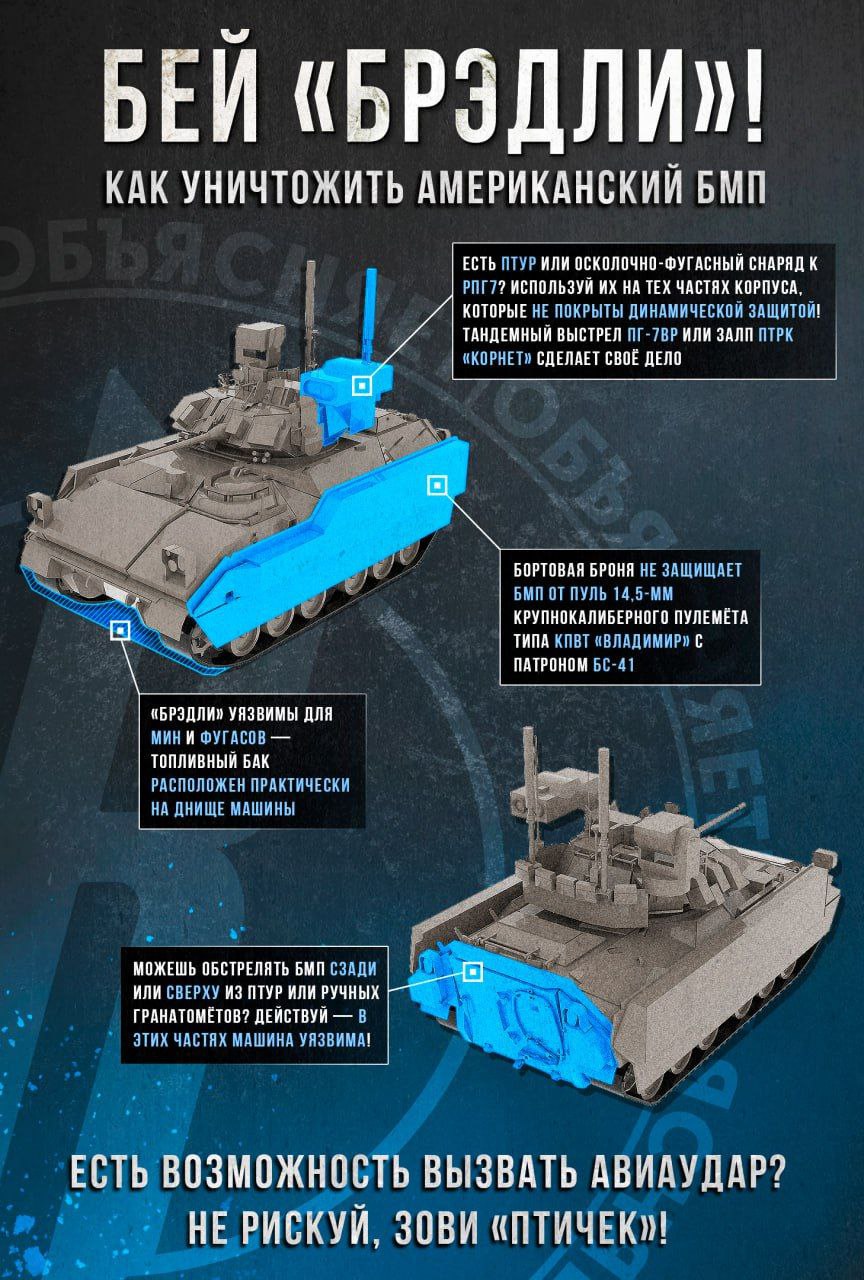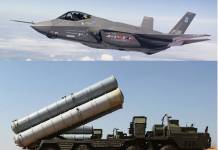Russian defense commentators are already discussing how to destroy the American M2A4 Bradley Fighting Vehicle (BFV), with illustrated images of the system’s weak spots going around Telegram groups.
While still a few months from being deployed in Ukraine and possibly manned by hastily trained crews not fully adept with the system, even if it’s deployed on time, the combat vehicle still represents a serious tactical threat to Russian armor and infantry.
The fast-moving vehicle is an effective tank killer, an anti-infantry weapon that can scathe through plains and invade Russian positions.
As the intense urban battle in Soledar with heavy house-to-house fighting unfolded, Bradley could have mowed down Russian troops and allowed Ukrainian infantry to storm and capture positions.
With the 50 Bradley units planned for Ukraine, armored warfare will become a new dimension to the one-year-old war.
So far, the entire war has been characterized by long-range missile strikes, electronic warfare, drones, unmanned warfare (both sea and air), and a limited cyber component. But a more traditional form like armored warfare can be taken as signs of the war possibly escalating.
The Bradley performed exceptionally in the first Gulf War (Operation Desert Storm), where only three were lost. But it sustained a higher number of losses (150) in Operation Iraqi Freedom as the counter-insurgency situation exposed its vulnerability to Improvised Explosive Devices (IED) and Rocket-Propelled Grenades (RPG).

The ‘How To Kill A Bradley’ Graphic
The graphic, which went around multiple Russian Telegram channels, shows a computerized representation of the Bradley and the various sections of its structure highlighted with dialogue boxes.
The Russian text suggests firing an Anti-Tank Guided Missile (ATGM), an RPG-7 with a fragmented warhead, or a 9M113 Kornet on its turret.

Another suggestion is mining the roads and the approaches possibly used by the Bradley as it is “vulnerable” to landmines. This has been consistent with the findings in the 2003 Iraq war and could be achieved by finding out the roads and the routes that the Bradley could use.
However, this would require accurate reconnaissance, intelligence, and a robust logistical network to undertake the mining operation rapidly. The last box identifies the most vulnerable rear and top parts of the Bradley and strikes them with an ATGM or grenade launcher.
A curious suggestion is, however, to shoot at the side armor, claimed to be weak, with a 14.5mm round fired from the KPV heavy machine gun. It is unlikely for a 14.5mm round to penetrate the thick welded armor hull, particularly the latest versions. Only the initial variants in the 1980s were said to be unable to withstand 12.7mm rounds.
A Russian Telegram user recommended calling in air strikes on Bradleys instead of wasting time engaging them. Russian helicopter gunships like the Ka-52 Alligator and Mi-28 Havoc may be used.
But this is again fraught with risks as they may open themselves to fire from Man-Portable Air Defense (MANPAD) missiles since the Ukrainians are likely to use the Bradley as bait.
Mean Machines – Just What Ukraine Needs
Bradleys would address Ukraine’s lack of maneuverability and personnel transportation to the battlefield, ferrying personnel in and out of combat zones and hitting hardened shelters and tanks. For tanks, the Bradley has the BGM-71 Tube-launched Optically-tracked Wire-guided (TOW) missile launcher loaded with two missiles.
The BGM-71E TOW can engage targets more than three kilometers away and is armed with a shaped charge weighing around 5.89 kilograms. Apart from the regular TOW missile, it carries a unique TOW-2B Aero version that engages in a fly-over low-down warhead mode.
They fly above the target, and the warhead explodes just above the turret, which is the most vulnerable part of the tank.

Training & Logistics
But the Bradley will not be without its share of obstacles, particularly the training component experts note will take a long and should not be compromised.
“The main challenge is that the Bradley Fighting Vehicle is an extraordinarily high-tech and complex system of systems that require a substantial level of technical and tactical expertise at the user level and an extremely high level of technical expertise at higher echelons to maintain and logistically support,” wrote former US Army officer Jeff Jager in 19FortyFive.
This is not to mention the string of logistical and maintenance chains connecting the army units with dozens of other private contractors, conducted through separate, multiple, and tedious contracts, revealing a mammoth program management process. How these modalities will be planned and executed for Ukraine remain to be seen.
Logistics and system familiarity issues also afflict complex US systems like the Patriot delivered to Ukraine recently and the F-16 fighters that Kyiv had been asking for separately.
- The author can be reached at satamp@gmail.com
- Follow EurAsian Times on Google News




